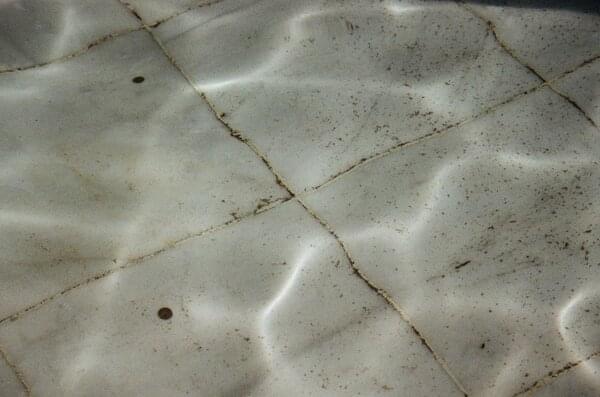
Maintaining a swimming pool is not just about crystal-clear water and balanced pH levels; it is also about preventing unsightly stains that can mar your pool's surface.
Understanding the various causes of pool stains and implementing effective preventative measures is important for keeping your pool looking its best.
In this article, we will explore the different types of pool stains, how to identify them, and most importantly, how to prevent them to ensure your pool remains a source of enjoyment for years to come.
The Causes of Pool Stains
Pool stains can originate from various sources, including metals, organic matter, and environmental factors. Identifying the root cause of a stain is a must for determining the appropriate treatment and prevention methods.
Metal or Rust-Based Stains
Metallic compounds, such as iron, copper, and manganese, can infiltrate your pool water from various sources, including corroded plumbing, certain algaecides, or even metal-based pool equipment.
When these metals oxidize upon exposure to air and water, they can leave unsightly stains on your pool's surface.
Organic Pool Stains
Organic materials like leaves, twigs, pollen, and algae can also lead to stains in your pool. When these organic substances decompose in the water, they release tannins, oils, and pigments that can adhere to the pool's walls and floor, causing discoloration.
Identifying Stains In Pools
Different types of pool stains exhibit distinct colors and characteristics, aiding in their identification and treatment.
Reddish-Blue Stains
Stains with a reddish-blue hue often indicate the presence of metals like copper or manganese. These stains typically appear in areas with poor water circulation or in regions where metal-based algaecides have been applied.
Brownish-Blackish-Purple Stains
Stains displaying a brownish-blackish-purple coloration are commonly caused by organic matter, such as decomposing leaves or algae. These stains tend to accumulate in areas with low sunlight exposure and inadequate water circulation.
Greenish-Brown Stains
Greenish-brown stains are frequently associated with algae growth. Algae thrive in environments with imbalanced water chemistry or insufficient sanitation, leading to the formation of unsightly stains on pool surfaces.
Blueish-Greenish-Black Stains
Stains exhibiting a blueish-greenish-black coloration are often indicative of a combination of metals and organic matter. These stains may result from the interaction between metal-based algaecides and organic debris in the pool water.
Greenish-Brownish-Red Stains
Stains with a greenish-brownish-red appearance may indicate the presence of both metals and organic matter. These stains can be particularly stubborn and challenging to remove without proper treatment.
Preventing Stains In Pools
Preventing pool stains requires a proactive approach that addresses both the underlying causes and contributing factors.
Regular Maintenance
Implementing a routine maintenance schedule is necessary for keeping your pool clean and free of stains. This includes skimming the surface, vacuuming debris, and maintaining proper water chemistry.
Balanced Water Chemistry
Maintaining balanced pH, alkalinity, and sanitizer levels is important for preventing stains caused by metals and organic matter. Regularly test your pool water and make adjustments as needed to ensure optimal water quality.
Use of Sequestering Agents
Sequestering agents can help prevent metal stains by binding to metal ions in the water, preventing them from oxidizing and depositing onto pool surfaces. Using a quality sequestering agent into your pool maintenance routine can effectively reduce the risk of metal-based stains.
Proper Filtration and Circulation
Adequate filtration and circulation are essential for preventing the buildup of organic matter and algae in your pool. Ensure that your pool's filtration system is operating efficiently and that water circulation is sufficient to prevent stagnant areas where stains can form.
Regular Cleaning
Routinely clean your pool surfaces using a pool brush to remove any buildup of algae, dirt, or other contaminants that could lead to stains. Pay particular attention to areas with poor water circulation, such as steps, corners, and behind ladders.
Avoiding Metal Contamination
Minimize the risk of metal stains by using metal-free pool equipment and avoiding the use of metal-based algaecides or oxidizers. Opt for non-metallic alternatives when possible, and regularly inspect metal components for signs of corrosion or deterioration.
In a Nutshell
Preventing pool stains requires a combination of proper maintenance practices, balanced water chemistry, and proactive measures to address potential sources of contamination.
Through identifying the causes of pool stains and implementing effective preventative strategies, you can keep your pool looking beautiful and inviting for years to come.